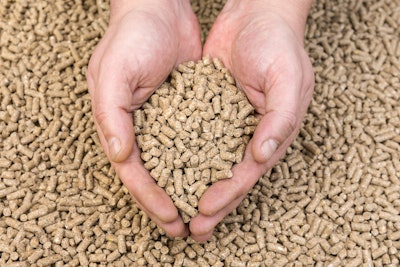
Extrusion is a well-known processing technique that offers several benefits in animal nutrition in terms of enhancing the nutritional quality, digestibility and overall performance of feed. This method involves the mechanical treatment of certain raw ingredients under high temperature and pressure, resulting in the formation of a highly processed and easily digestible feed. Here are some key benefits of extrusion in animal nutrition:
Improved nutrient availability
Extrusion helps break down the cell walls of raw ingredients, making nutrients more accessible to animals. This process improves the bioavailability of essential nutrients such as proteins, starches and vitamins, ensuring that animals can absorb and utilize these nutrients more effectively.
Increased digestibility
Extruded feeds are characterized by enhanced digestibility due to the gelatinization of starches and the denaturation of proteins during the high-temperature extrusion process. This results in a feed that is more easily broken down by the digestive enzymes of animals, leading to improved nutrient absorption and utilization.
Reduction of anti-nutritional factors
Extrusion helps in the inactivation or reduction of certain heat-liable anti-nutritional factors present in some raw ingredients. Anti-nutritional factors, such as trypsin inhibitors, lectins and tannins, can interfere with nutrient absorption and utilization in animals. Extrusion contributes to the destruction or reduction of these factors, enhancing the nutritional quality of the feed.
Enhanced palatability
The extrusion process often leads to the development of desirable flavors and aromas in the feed, making it more palatable for animals. This can encourage better feed intake, leading to improved overall nutrition and performance. This “cooking” effect remains largely unknown and deserves more research to shed light on it.
Better pellet formation
Extrusion facilitates the formation of uniform and dense pellets, which are easier for animals to consume. Pelleting can also contribute to the reduction of feed wastage and dust, leading to a more efficient and cleaner feeding process.
Improved feed handling and storage
Certain extruded raw materials are more stable and resistant to spoilage, mold and insect infestation. This results in longer shelf life and improved feed quality during storage, reducing the risk of nutrient degradation over time.
Customization of formulations
Extrusion allows for the incorporation of a variety of ingredients, creating blends of unique properties and marketing appeal. This flexibility enables the formulation of feeds tailored to specific nutritional requirements for different animal species and life stages. It also offers the ability to distinguish one product among many similar in a competitive market.
Pathogen control
Of course, the high temperatures involved in the extrusion process contribute to the elimination of potentially harmful microorganisms, reducing the risk of contamination and improving the overall safety of the feed.
In conclusion, extrusion is a valuable tool in animal nutrition, offering numerous benefits that contribute to the production of high-quality, nutritionally optimized feeds. It plays a crucial role in enhancing nutrient availability, digestibility and overall feed performance, ultimately promoting the health and productivity of animals. However, it comes at a cost that must be weighed against all those benefits.

















